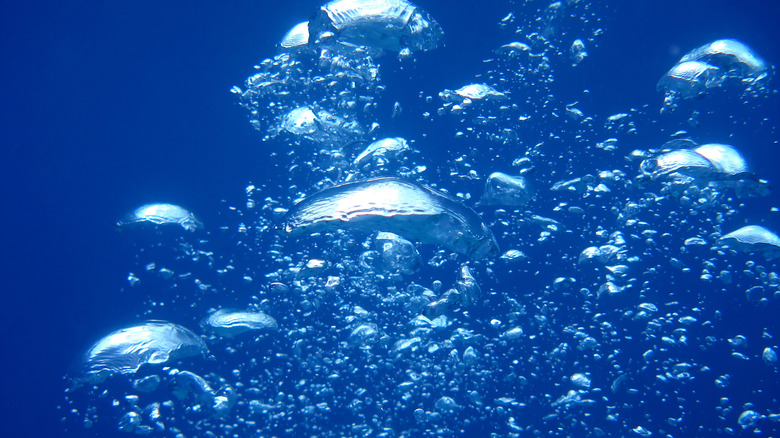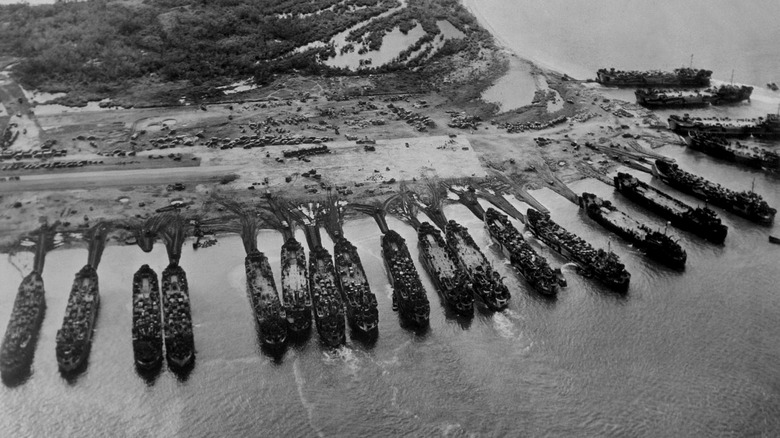The Truth About Japan's Forgotten Kamikaze Diver Unit
As World War II progressed in the Pacific Theater, Japan's military strength eroded rapidly. Each ship they managed to sink, each soldier they managed to kill, was only replaced by several more. Japan meanwhile had no chance of retaining their prewar naval strength. For instance, just a handful of new aircraft carriers came out of Japanese shipyards to replace the four lost at Midway. In total they built around 25 of all types, but never had this many available at one time (via National Interest). The Americans, on the other hand, went into the war with seven fleet carriers and left it with over 100 of all types (via Bluejacket).
As the Americans liberated more and more islands, they eventually reached those considered part of Japan itself, such as Okinawa and Iwo Jima. The Imperial military looked to a desperate measure that they thought could stave off the advance: the Kamikaze. Thousands of Japanese service personnel either volunteered or were pressured into giving their lives for their country in suicide attacks, and in 1944, Captain Kiichi Shintani took this desperation to an exceptional extreme.
Japanese Divers were drafted to blow up American ships from underwater
While best known today as bomb-laden suicide aircraft flown into Allied ships, Kamikaze attacks took all sorts of planned and implemented maritime forms as well, including speed boats, small submarines, manned torpedoes, and divers by themselves (via Washington Post). The latter, named the Fukuryu, were conceptualized by the aforementioned Captain, who believed that frogmen using mines against ships was an ideal alternative to the use of increasingly irreplaceable vehicles.
According to Today I Found Out, 6,000 of these divers were meant to be deployed in areas where Allied ships were likely to land. Wearing specialized suits, the slow-moving frogmen would emerge at night from underwater fortifications. Their weapon, a mine attached to a long pole, would have been struck against the hull of invading landing craft. This would have both killed the diver and likely caused immense damage to the ship. The project never saw use, as Japan lacked the infrastructure to manufacture enough of the necessary components at that point in the war. Even those that were produced were of varying quality, with faulty re-breathers even killing some prospective divers.

